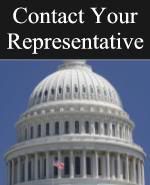Study shows immigrants play no role in healthcare crisis.
Contrary to popular opinion, and the propaganda coming from anti-immigration advocates in Washington, a new study released in health care policy journal Health Affairs found that undocumented immigrants are not the cause of a public health crisis defined by over-crowded emergency departments, higher health care costs, and lower-quality primary care.
The study of 46,600 people living in 60 different communities found that the communities with high levels of Hispanics and undocumented immigrants had far lesser rates of emergency department use than communities with low undocumented representation. By far the largest cause of emergency department overcrowding was found to be an increased use of them as primary care facilities by native born Medicare and Medicaid recipients.
[Editors Note:] The link to the study in Health Affiars is now expired. A MS Word file of the study is available at: http://83.149.77.10/Docs%20EFPR/What%20Accounts%20For%20Differences.doc
tags: immigration, emergency room use, undocumented immigrants
The supposed stress put on our healthcare system by the undocumented has been a cornerstone in much of the anti-immigrant rhetoric coming out of Washington.
According to the official Republican talking points on immigration, Respect for the Law & Economic Fairness: Illegal Immigration Prevention, Republican pollster Frank Luntz suggests that candidates should stress that "... as a matter of principle, we should not use our tax dollars to pay for services for illegal immigrants until we take care of the hard-working, tax-paying Americans. This shows voters that you have compassion but that you also understand where your priorities are – and should be."
He suggest that a good way to express this point is to use the following language:"If we stop people from successfully getting across the border, then our schools won’t be as overcrowded, the hospital waiting rooms and emergency rooms won’t be as overcrowded, our highways and our streets won’t be as overcrowded, our social services won’t be as abused, and taxpayers won’t be as punished.” .... Frank Luntz
This kind of rhetoric works because between 1993 and 2003 there's been a 26 percent increase in the number of hospital emergency department (ED) visits, totaling about 114 million visits each year. Up to one third of these visits were classified as nonurgent or semi-urgent and could have been taken care of by regular primary care physicians.
It has long been assumed that these increases had been caused by the increasing population of undocumented immigrants and the growing number of uninsured Americans using emergency rooms as their sole source of medical treatment.
According to the study What Accounts For Differences In The Use Of Hospital Emergency Departments Across U.S. Communities? by Peter Cunningham, a senior fellow at the Center for Studying Health System Change in Washington, D.C., "communities with the lowest ED use tended to have a higher percentage of Hispanics and noncitizens than communities with high ED use." The blame for the increase in ED usage falls not at the feet of the undocumented or the uninsured but rather on those who are the recipients of various government healthcare programs.
This study examines the extent to which differences in populations and health system factors account for variations in ED use across U.S. communities. Contrary to popular perceptions, communities with high ED use have fewer numbers of uninsured, Hispanic, and noncitizen residents. Outpatient capacity constraints also contribute to high ED use. However, high ED use in some communities also likely reflects generic preferences for EDs as a source of care for nonurgent problems.
-snip-
There is much concern that some of the increase will be driven by illegal immigration, which is cited as straining ED capacity in some hospitals, especially along the U.S./Mexico border. However, given the very low levels of ED use among poor noncitizens in general (many of whom are likely to be undocumented immigrants), it is very unlikely that these highly localized problems with ED crowding will affect the nation more generally as the Latino population increases and migrates to other parts of the country. Low use of the ED among noncitizens reflects low use of health care services in general and perhaps fear among undocumented immigrants about being asked about their immigration status.
...as our findings indicate, communities have high rates of per person ED use in part because they have fewer, rather than greater, numbers of Hispanics and noncitizens
-snip-
Insurance, demographic, socioeconomic, and health factors are strongly related to individuals’ ED use, although some of these results run contrary to popular perceptions. For example, in 2003, the uninsured had about sixteen fewer visits on average (per 100 people) compared to Medicaid enrollees, about twenty fewer visits compared to Medicare enrollees, and roughly similar levels of use compared to privately insured people (Exhibit 3). Noncitizens had much lower levels of ED use than citizens did (about 17 fewer visits per 100 people, on average), and the difference between poor citizens and non-citizens was almost twice as large. In terms of racial/ethnic differences, blacks had higher ED use levels than whites and Hispanics did in 2003. More in line with expectations was the higher ED use by poor people (less than 100 percent of poverty) compared to other income groups, and higher ED use by people in fair/poor health and with chronic medical conditions.
-snip-
Although uninsured people rely on EDs to a greater extent than insured people do because of a lack of access to other outpatient care, their actual use of hospital EDs is no greater than that of the privately insured, probably because fear of incurring the entire cost of an ED visit acts as a constraint on how frequently they visit EDs. Although rising uninsurance rates might not raise ED visit rates among the population, higher levels of uncompensated ED visits in many hospitals are likely to result, especially in public hospitals and other safety-net hospitals that tend to serve a high proportion of uninsured people
The survey found that the one group that accounts for most of the increased usage of emergency departments are those on government programs such as Medicaid and Medicare. This is in part due not only to the general health issues of the elderly and poor, but the lack of other services available to this segment of the population. Many physicians are unwilling to take on new low-income patients due to Medicare and Medicaid's limited payment schedules. Ethnically, the study found that blacks were the most likely group to use emergency room services. This would be due to a combination of lack of services in low-income black neighborhoods and a resulting "generic preference for EDs as a source of care" amongst members of this under-serviced community.
High levels of ED use among Medicare beneficiaries and Medicaid enrollees are a potential source of increases in ED visit rates in the future. The aging of the population and retirement of the baby-boom generation will greatly increase Medicare enrollment and the proportion of the population who are elderly, who tend to have higher levels of ED use compared to other age groups.
Also, continued increases in private insurance costs could result in increases in both Medicaid and other public coverage of nonelderly people, as well as increases in the number of uninsured people. High use of EDs in Medicaid likely reflects in part little or no cost sharing for health services use, and perhaps lack of access to office-based physicians (because of low physician reimbursement rates under Medicaid)
-snip-
This study also shows that longer waiting times for appointments with physicians and a higher number of physician office visits relative to the number of physicians in a community increased ED visit levels, and the effects were greatest for poor people (Exhibit 2). In part, this may reflect the fact that physicians with full practices and constrained reimbursement from Medicaid and other payers were less willing to see low-income patients in their offices and more likely to refer such patients to the ED.
link
As is the case with many of the "problems" attributed to the "immigration crisis", the overcrowding of emergency rooms and the subsequent economic strains put on the healthcare system, can be attributed more to governmental failure to properly administer its public health programs to assure proper care for all Americans than on the influx of undocumented immigrants. It's just another of the many false preconceptions perpetuated by the anti-immigration proponents to further their agenda of misdirection and blame shifting.

































1 comment:
Focusing on Healthcare Costs of Illegal Immigrants Draws Attention Away from the Real Problem
Too many illegal immigrants are overwhelming the healthcare system and driving up health insurance costs. That's the latest sound bite in the war of words over immigration reform. In a recent poll, a majority of the respondents thought that illegal immigrants were responsible for 50 percent or more of the uninsured treated in Southern California hospitals. But is that really the case?
While it is true that providing treatment to undocumented immigrants creates a drain on hospital resources, the question is: How much of the problem can reasonably be attributed to the undocumented? And if we solved the problem of illegal immigration tomorrow -- which we won't -- would healthcare costs return to "reasonable" levels?
Illegal immigrants are responsible for roughly 20 percent of the $2 billion in unreimbursed care that Southern California hospitals deliver each year. Even if you consider that factor, you have to conclude that it's the larger problem of just simply having so many uninsured patients that is a key driver of rising hospital costs.
In order to receive federal Medicare and Medicaid payments, a hospital must agree to treat and stabilize everybody who shows up to a hospital ER regardless of their ability to pay or their immigration status. That means undocumented immigrants who show up at the emergency room will receive treatment regardless of their immigration status or whether they're insured. But so will legal immigrants, naturalized citizens and native-born Americans.
It is a matter of law that these people receive treatment. Indeed, we may have an ethical responsibility to do so as well. The problem is that most hospitals in California end up being paid for only about 5 percent of the medical care given to uninsured patients. And that leads to the question: So, who's going to pick up the tab?
In the absence of strong political leadership on the question of insuring the uninsured, the answer, inevitably, is that hospitals and those patients with insurance, as well as those uninsured who do pay, will end up paying for those who seek care without insurance -- regardless of whether they are here legally or not.
http://www.hasc.org/lott.cfm
Post a Comment